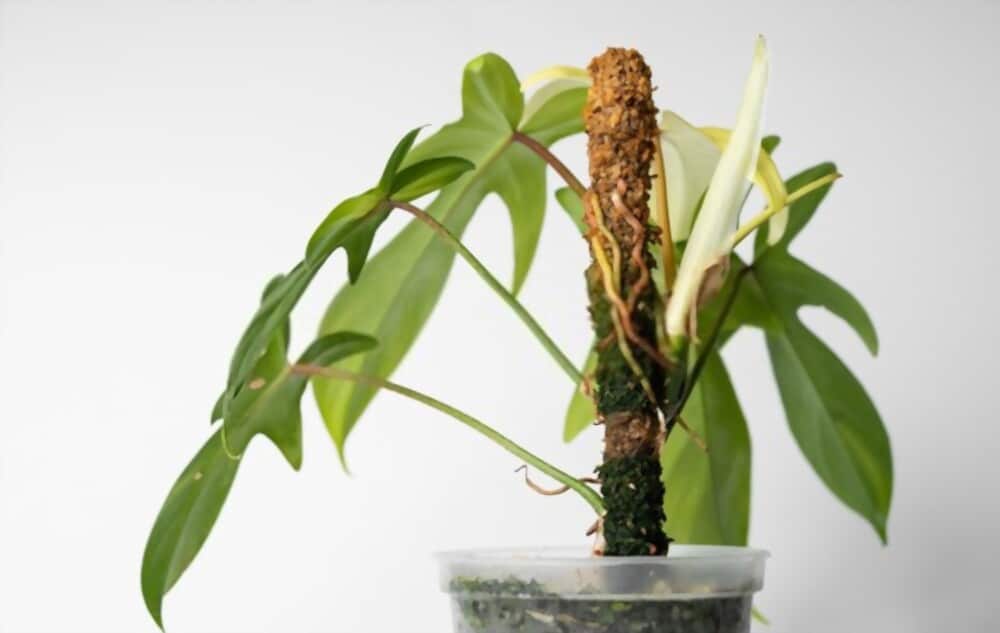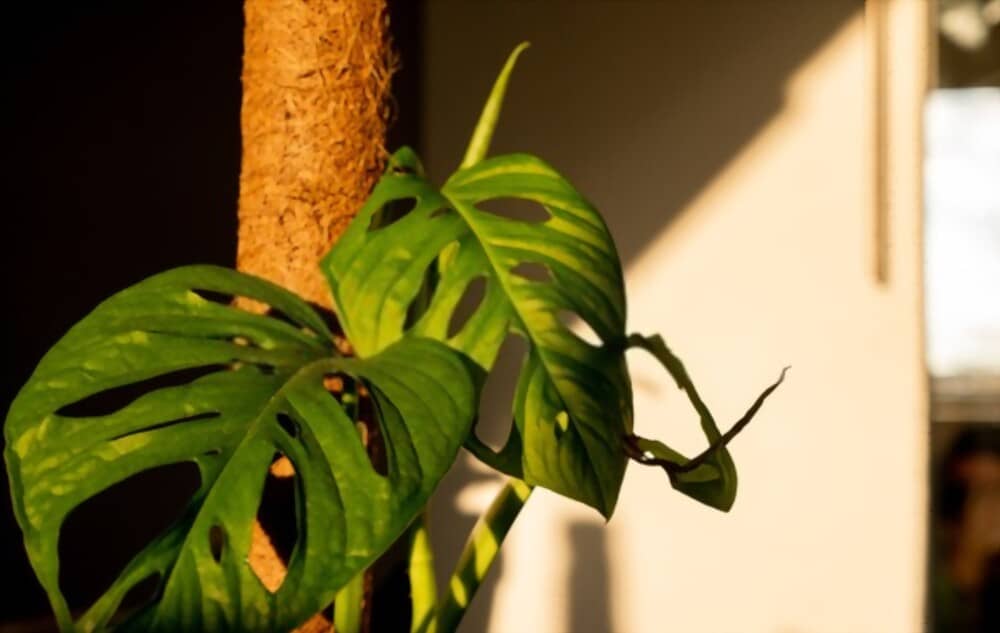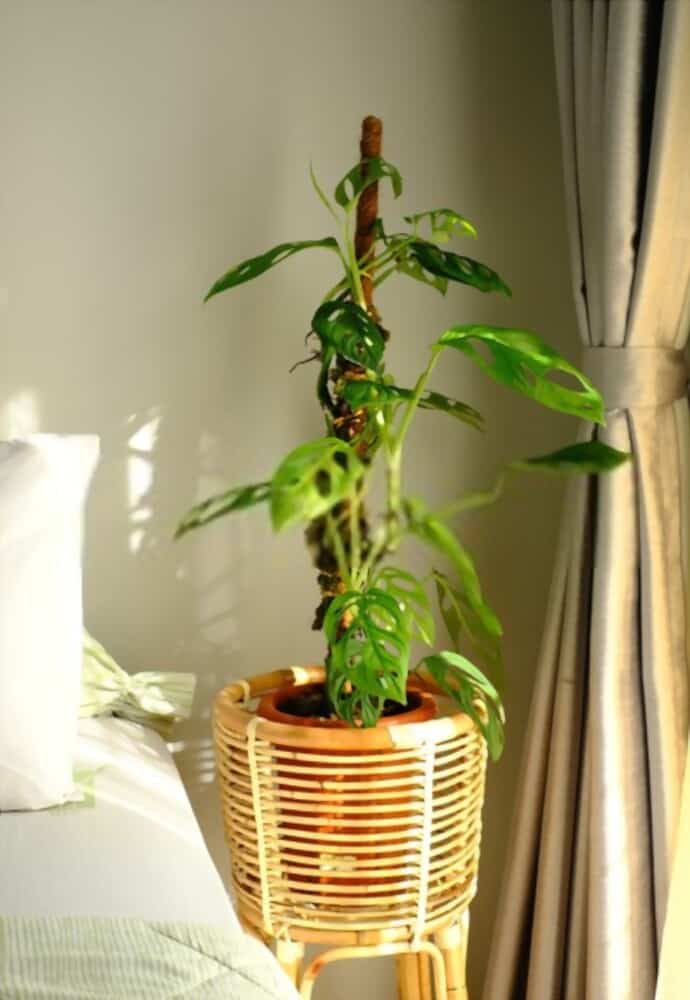Moss poles are straightforward structures that are occasionally challenging to get to. Finding a substitute can be a good idea because they are frequently highly cost-effective and serve the same purpose as a pole made entirely of moss.
There are numerous alternatives to moss that can be used to make moss poles. The ideal substitutes for a moss pole are a piece of natural bamboo or a tree slab. Alternatives include coir poles, wooden sticks, PVC pipes, and contemporary metal trellises from Pinterest.
These poles serve as a support structure to help plants become taller. Additionally, moss poles are necessary for plants like monsteras, pothos, and vines to grow upright and preserve their structure.
Are you looking for moss pole substitutes? Do you wish to select an appropriate one? This post will show you several low-cost moss pole substitutes as well as how to create your own.
If you want a moss pole that is both affordable and effective. Clicking here will take you there!
Table of Contents
Moss Pole Alternatives:
A healthy plant need constant care to remain appealing. A moss pole facilitates plant ascent and simulates the pressure needed to irrigate roots.
Thanks to helpful instruments, they are able to absorb nutrients and moisture from the air and surroundings that are necessary for growth.
The moss pole itself is not very sturdy for supporting vines because it bends under the weight of the plants.
For more information on utilizing moss poles, see our thorough and useful articles on Using Moss Poles for Houseplants and How to Keep a Moss Pole Moist.
Below are some alternatives to moss poles, along with benefits and drawbacks;
Coir Poles:
The fiber known as coco coir is derived from the coconut’s outer, fibrous shell.
Between the coconut’s hard internal shell and its exterior surface is fiber. Geo-coirs are entirely natural; the color of the coir, which ranges from white to brown, depends on the material used to make the poles.
Coir material is simply wrapped around wood or PVC tubing to create coir-poles.
Advantages:
| The excellent water retention capacity of the plant is enhanced by the coir-poles’ high porosity. |
| When plants firmly grasp their roots, they grow spontaneously. |
| These poles can be employed in greenhouse farming, horticulture, and nurseries. Both indoor and outdoor farming appropriate. |
| Plants, such as money plants, benefit from rapid vertical development thanks to coir-poles. |
| Other qualities include biodegradability, durability, strength, and PH that is acceptable. |
Disadvantages:
| Wide, high-quality pipes or wood should be utilized in coir-pole construction. |
| The excessive salt that coco-poles produce is harmful to plant growth. |
| cation-exchange capability that is lower. |
| Gardners who switched to using coir poles instead of sphagnum should alter their fertilizer usage. |
| They only have a 2-4 year lifespan. |
Wooden Sticks:
In the preparation of various DIY poles, wooden sticks are employed. Although these sticks can be utilized on their own, they don’t offer many advantages.
To make poles, jute, sphagnum moss, and coco fibers are wrapped around the wooden shaft. Only wooden sticks are used as a support material for making poles.
Advantages:
| Ordinary quality wooden sticks are inexpensive (cost is reduced by 3.5 times) and easily accessible. They can be manually manufactured at home. |
| Lightweight, robust, and elastic, with a specific gravity of 700 kg/m3. |
| simple installation and transportation. |
| No cautious handling is necessary |
| Do not cause any outages, so a domino effect is not present. |
Disadvantages:
| Concrete is stiff, whereas wood is flexible and can bend in severe gusts. |
| Bug production is at a high danger, which weakens the resilience of plants and poles. |
| Due to the government’s tight wood regulatory rules, wood pools are not readily available. |
| raises the possibility of flames. |
| the region with little humidity. |
Bamboo:
A tall, branching, woody tree, bamboo is. No nation can prosper, according to the Chinese, without a tree like bamboo.
A superior and naturally pest-resistant alternative to wood and moss pole is bamboo.
Advantages:
| Stylish, robust, and eco-friendly |
| Sometimes, hard plants have tensile strengths greater than steel. |
| environmentally friendly, produces 35% more oxygen while reducing pollutants. |
| Stop soil erosion with a water barrier. |
| Low water pollution is caused by high nitrogen levels. |
Disadvantages:
| A fungus attack occurs on the bamboo pole if it is not properly cared for. |
| Bamboo contracts more than tree wood does. |
| They need to be preserved beforehand. |
| They are cutting into the soil’s deepest roots. |
PVC Pipe:
A woody, bamboo moss pole substitute uses PVC pipe. By offering the plant sustenance, it benefits the plant in numerous ways. Most people favor using it.
Advantages:
| Strong, hard to bend posture. |
| A sharp edge makes installation simpler. |
| There are no rotting or fungus problems. |
| enduring and recyclable. |
| a more natural appearance than wood. |
Disadvantages:
| Simple to crack. |
| Cannot install in a hot environment. |
| unable to decompose but able to melt at high temperatures. |
| There is no nutrient for plants. |
| PVC includes substances that can seep into the ground. |
Metal Pipe:
Steel pipes make up the majority of hollow metal pipes, which are used for a number of reasons. Creating moss poles also involves the use of metal mesh.
Advantages:
| Much more long-lasting and durable. |
| enhances the qualities of metal corrosion. |
| resist the pressure of plants and vines. |
| Don’t leak chemicals into the water; non-reactive with water. |
| It has a 50-year maximum useful life. |
Disadvantages:
| safety issues |
| High price, challenging to buy. |
| No food for the plants. |
| high temperature when it’s hot outside. |
| Not flexible; once laid, fixed |
Disadvantages of using an Original Moss Pole:
Original moss poles are problematic, and they occasionally don’t work well for houseplants.
The primary problem is how the moss plant looks; it merely has the appearance of muck stuffed inside a fishnet stocking.
Climbing plants have a predisposition to ascend the support on their own. In the case of moss poles, you typically have to manually attach to and climb the roots.
This is absurd because climbing plants, including ivy and aroids, usually grow up on their own.
Moss poles can mold and are not very stable. If you don’t catch them in time, they could be problematic and harmful to plants.
The moss pole may occasionally no longer fit the plants since the plant owners don’t want to keep extending the support device.
Alternatives to moss poles are needed because of this ongoing issue.
DIY Moss Pole – How to Make a Moss Pole?
Market-available moss poles are pricy and untidy. However, using inexpensive materials and straightforward instructions, you can create a high-quality DIY moss pole at home.
The steps to prepare a moss pole are listed below;
Material Required:
- PVC hose
- Hemp rope
- powerful glue
- Paint (optional)
Tools:
- scissors, a pair
- Cutting Pipe
Step-by-step procedure:
1. Cutting of PVC pipe:
PVC pipes are quite affordable and are available pre-cut. Take a 1 1/2′′ wide pipe and trim the length to fit the plant pot and desired height for the plant.
The measured depth of the plant pot can be taken as the length of the pipe.
The necessary size can be cut with the use of a pipe cutter or miter saw.
Traditional treatments typically involve the use of sphagnum moss or wooden pools, but neither of these has a lasting impact.
PVC pipe is inexpensive, strong, and easily accessible in contrast to wood, which is fairly expensive.
2. Adhesion:
Consider how many pieces of the pipe will be buried inside the potting soil, and mark that number. With normal vision, just have a basic concept.
Now wrap the jute rope around the pipe above the stated length using strong glue on one end. Wait a time for it to dry.
3. Glue on PVC pipe and jute wrapping:
Jute dries, but apply thick glue all over the pipe as a beginning point. Wrap the remaining jute string carefully around the PVC pipe’s top. The pipe is prepared.
4. Painting (optional):
If necessary, you can paint the pipe’s white portion to improve the appearance.
The Takeaway:
Moss poles offer support so that plants can develop at a greater height. Epiphytes, however, need a different surface to grow on.
With the use of helpful instruments, they obtain the oxygen and water necessary for growth.
Sadly, moss on poles is not always accessible. However, a number of different poles can be created using straightforward components.
Bamboo and tree slabs make excellent substitutes for moss poles. In addition, modern metal trellises, hardwood sticks, PVC pipes, and coir poles are useful substitutes.
FAQ
Is trellis or moss pole better for monstera?
A moss totem allows M. deliciosa to act more like it would in the wild while yet supporting those heavy stems and leaves better than a traditional plant stake or wire trellis. With just a few basic tools, you can train a monstera to a moss pole: Your monstera in a pot.
What kind of pole is best for Monstera?
A moss pole is one of the most widely used methods for staking Monsteras, but it’s not the only option. Utilizing a moss pole or a coco coir pole has certain advantages because of their natural texture, which makes them simple for aerial roots to grasp.
Should a Monstera have a pole?
Growing plants within the house require the support of a moss-covered, climbable pole. If properly cared for, monstera can live for many years and reach heights of well over ten feet.
How do I choose a moss pole for Monstera?
Does it have to be a moss pole?
All you need after purchasing a climbing plant like a Monstera, Philodendron, or Pothos is a moss pole and a means of attaching it to your plant. A moss pole could initially look frightening, but after using it for the first time, you’ll find that it’s extremely beautiful and simple to use.



